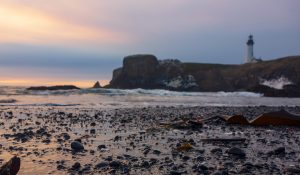Coast Guard Announces Official Investigation into F/V Mary B II Capsizing
 The U.S. Coast Guard has announced that it will formally investigate the sinking of the F/V MARY B II, which capsized near Newport, Oregon along the Yaquina Bay bar on January 8th. Three men died as the result of the sinking of the 42-foot vessel. It was reported that prior to the accident, the crew called for a Coast Guard escort due to heavy weather and 14 to 16 f00t waves. Tragically, before the escort reached the vessel, it capsized.
The U.S. Coast Guard has announced that it will formally investigate the sinking of the F/V MARY B II, which capsized near Newport, Oregon along the Yaquina Bay bar on January 8th. Three men died as the result of the sinking of the 42-foot vessel. It was reported that prior to the accident, the crew called for a Coast Guard escort due to heavy weather and 14 to 16 f00t waves. Tragically, before the escort reached the vessel, it capsized.
Rear Admiral David Throop has authorized the investigation. He is the Commander of the Thirteenth Coast Guard District which is headquartered in Seattle, Washington. Rear Admiral Throop is responsible for all Coast Guard operations throughout the Pacific Northwest including protection of life and property, enforcement of federal laws and treaties, preservation of living marine resources, and promotion of national security. The Thirteenth District is made up of Washington, Oregon, Idaho, and Montana, and includes over 4,400 miles of coastline.
Commander Karen Denny, who has over 18 years of experience investigating marine casualties with the Marine Safety Unit Portland, will lead the investigation. Commander Denny will then issue a report which will detail collected evidence, conclusions, and safety recommendations that could help prevent future accidents of this kind.
The Yaquina Bay bar is an area where shallow waters from the Yaquina River meet the deep waters of the Pacific Ocean. Because this is an area known for difficult crossings, weather and bar conditions are monitored and updates of crossing conditions are reported every four hours or more frequently during significant weather. Hazards associated with crossing the bar are so great that the Oregon State Marine Board has published a bulletin titled Yaquina Bay Bar Hazards which includes warnings and best practices for making the crossing. A Regulated Navigation Area was established and is monitored by the U.S. Coast Guard which features signs and warning lights if and when hazardous conditions are present.
 Maritime Injury Law Blog
Maritime Injury Law Blog

